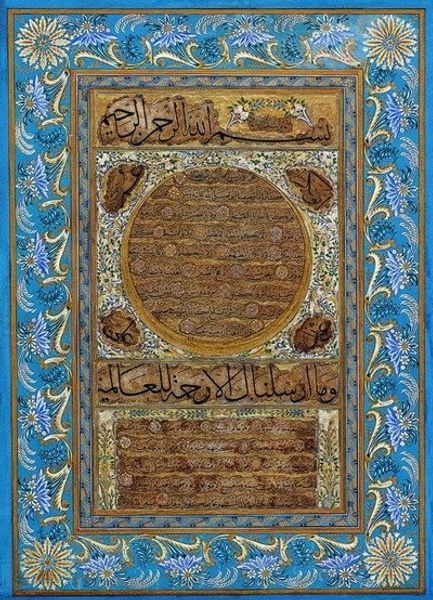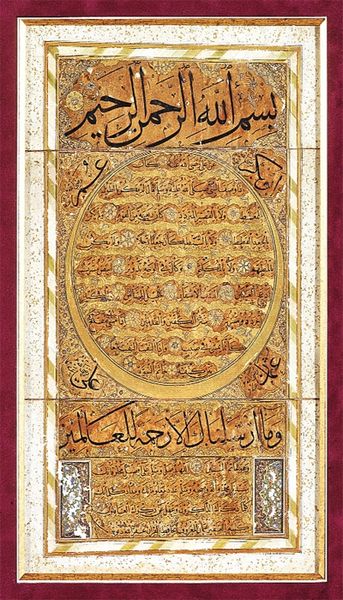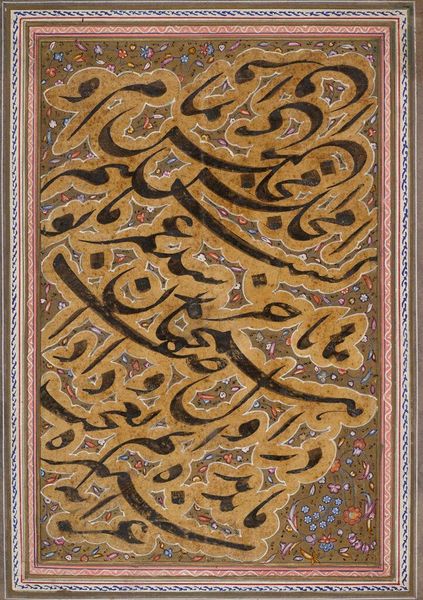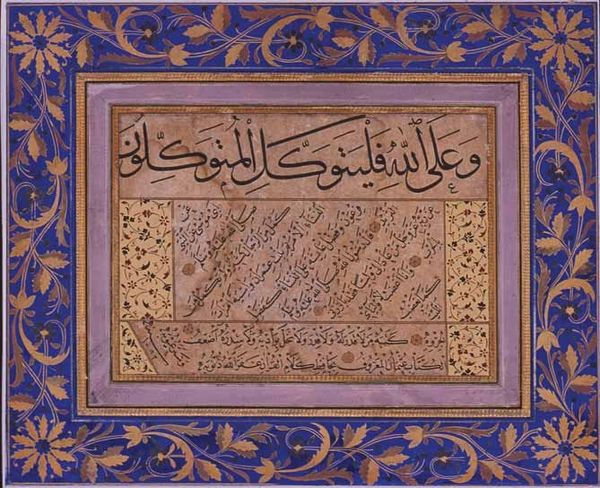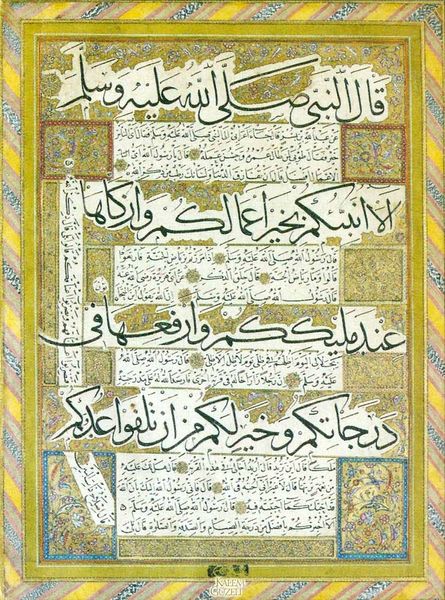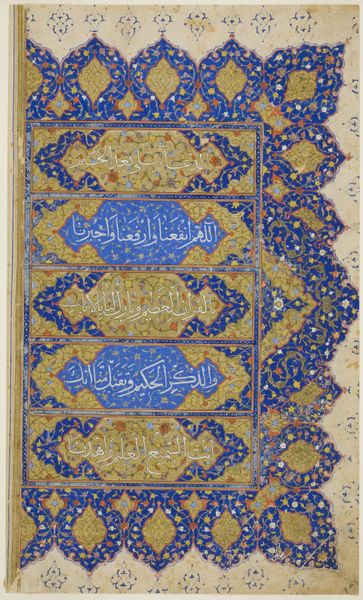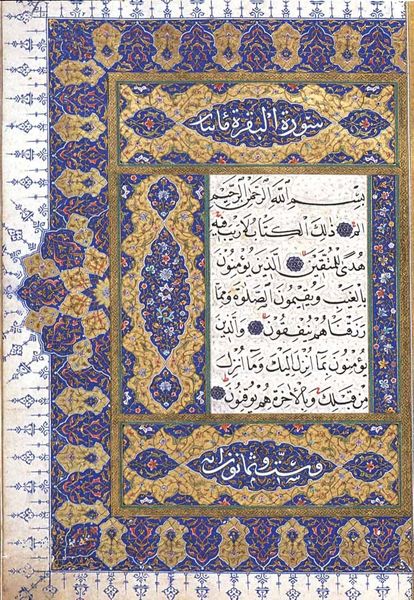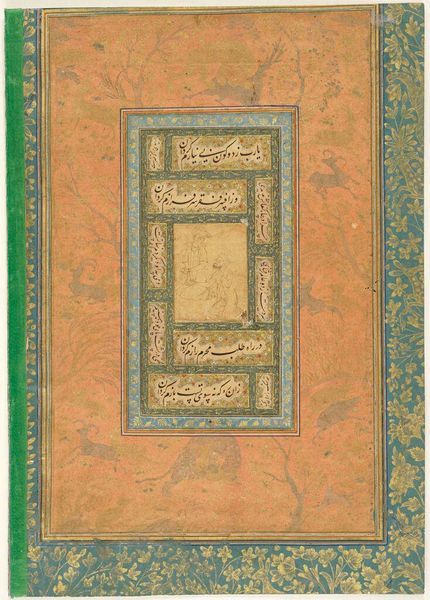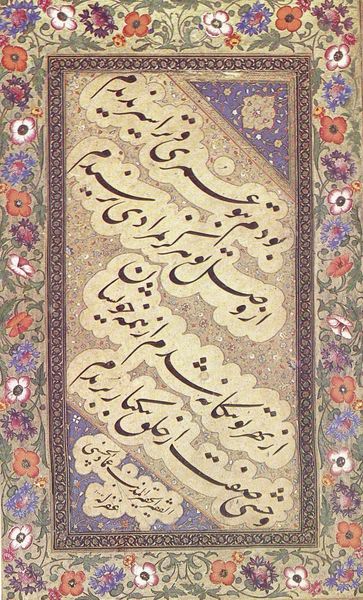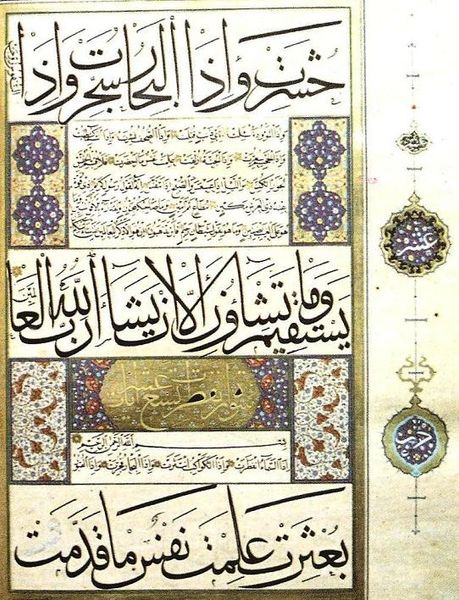
#
geometric pattern
#
geometric
#
islamic-art
#
miniature
#
calligraphy
Copyright: Public domain
Curator: Immediately, the colors just shimmer; it feels like a hidden jewel box. All that meticulous script work. What do you think? Editor: A shimmering jewel box, I love that. It does have that feel, contained and precious. It also looks intensely crafted and devotional. It evokes something deeply sacred to me. Curator: This is a Hilye. Hilyes are visual representations of the Prophet Muhammad's physical appearance and character as described in accounts known as "hilye-i şerif." Traditionally, the esteemed calligrapher Hafiz Osman is believed to be the creator of the "classical" Hilye design format, the very structure we see here today. Editor: Interesting that this essentially visual work has its origins in *descriptions*. So someone wrote this down, maybe drawing on cultural memory or lived experience and Hafiz Osman took the form of script and designed it into the Hilye? It is incredible! I'm struck by the abstraction though –it’s writing, but it’s so intricately patterned that the legibility becomes secondary, even as it's revered text. Curator: The symbolic ordering and arrangement of text reflects a complex system. Hilyes start from "Bismillah ir-Rahman ir-Rahim" which translates into "In the name of God, the Most Gracious, the Most Merciful”. They then progress downwards, weaving the narrative, with four cartouches surrounding a central large circle, which encompasses the main description. Finally, you read the final line located along the bottom. Each has their distinct role and place in creating this iconic and symbolic picture. Editor: That formal structure reminds me a bit of Byzantine icons. They share a similar reverence for image and symbolic, structured layout. It is pretty astounding to imagine what cultural memory would have played in their significance and placement! Curator: You make an insightful point. The repetition of certain patterns creates visual pathways, a process where the reader becomes not just an observer, but an active participant. These geometric structures often symbolize the infinite and the eternal. Editor: Infinite indeed, a window into complex traditions through a devotional practice of mindful repetition. That feels powerfully calming even now, to engage so closely with detail in such a carefully balanced way. Thanks for this incredible glimpse.
Comments
No comments
Be the first to comment and join the conversation on the ultimate creative platform.
